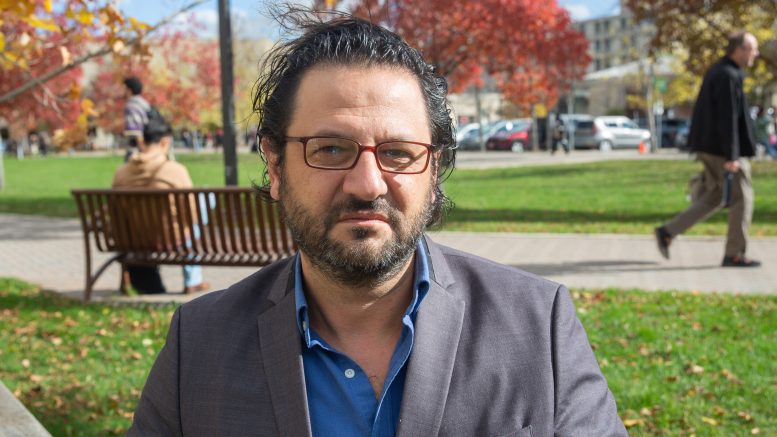Time perception is a critical aspect of human and animal cognition, influencing decision-making, memory, communication and motor control.
U of M associate professor in the department of biological sciences Fuat Balci delves deep into the intricate workings of the human and animal mind, focusing on the sense of time and how it operates and investigating its commonalities and differences across species.
“I’m obsessed with our sense of time as humans, and why and how the sense of time also takes place in other animals like mice, rats, pigeons, you name it,” he said.
Balci focuses on the concept of scalar timing, a fundamental feature of time perception shared by various species. As time intervals grow longer, the precision of internal timing decreases, similar to pixelation on a television screen.
This implies that the part of the human brain acting as a stopwatch “must be an evolutionary well-preserved function,” said Balci, “suggesting that maybe, whatever internal clock runs our sense of time [is] very comparable between different species.”
Balci’s research has practical implications — offering insight into the human mind’s evolutionary underpinnings and providing a basis for using animal models to understand the workings of the human brain.
It also allows researchers like Balci to explore the disruptions in time perception associated with neurological disorders like autism and develop therapeutic interventions.
Studies have suggested that individuals with autism may experience a heightened sense of uncertainty due to disruptions to their internal clock. This heightened uncertainty might lead to repetitive behaviours and other characteristic features of autism.
By investigating how time perception operates in autistic individuals, Balci aims to uncover the relationship between time perception deficits and the broader symptoms of autism.
His project, titled “NeVRo: Combining calcium imaging, optogenetics and virtual reality to investigate internal clock in autism,” explores the role of time perception in autism spectrum disorders through autistic animal models.
“If you look at how animals are tested in the lab, we typically put them in small boxes, test boxes that don’t have [a] naturalistic scale for time and space,” he said.
Balci explained that observing a mouse in such settings fails to capture the full spectrum of its natural behaviours.
Balci is determined to overcome the limitations of these conventional animal testing environments by creating ecologically valid testing conditions using virtual reality technology. In his experimental setup, mice run on a suspended ball, controlling their movements in a virtual setting.
Balci explained that this approach provides a more realistic testing environment and allows the observation of individual neuron activity at a cellular level.
Additionally, Balci combines virtual reality with cutting-edge technology such as calcium imaging and optogenetics. Calcium imaging is used to monitor the activity of individual neurons through calcium transients — short and quick changes in calcium concentration — while optogenetics combines optics (the study of light) and genetics in controlling the activity of neurons.
Balci employs these to manipulate specific neurons and gain insights into cause-and-effect relationships between brain activity and behaviour.
This combined approach goes beyond simplistic screening of animal models for human diseases and drugs. Balci emphasized that it helps him generate and analyze neural activity patterns, making it possible to potentially correct disrupted brain activity as observed in autism.
“Instead of having this very quick and dirty screening of animal models of human diseases and drugs for it, I’m doing an in-depth phenotyping” he said. In-depth phenotyping involves analyzing observable traits and characteristics.
Balci’s research has the potential to provide a deeper understanding of cognitive mechanisms and their role in disorders like autism. Autism spectrum disorder encompasses a wide range of symptoms, including challenges in cognitive ability and difficulties in understanding the perspectives of others.
“As a scientist, what you can do is you can target any of these specific symptom domains and go after it,” he said. “I’m more after the core symptoms that are latent.”
Through the NeVRo project, Balci digs into these core, latent symptoms of autism. He seeks to uncover if there might be a common underlying cause.
This exploration has the potential to unlock “a deeper understanding of the cognitive disruptions at the heart of autism,” he said.
By addressing these fundamental aspects, Balci’s project aims to not only advance our comprehension of autism but also to potentially open doors to more effective therapeutic interventions, ultimately improving the lives of autistic individuals.





